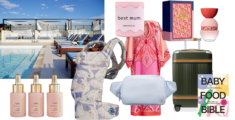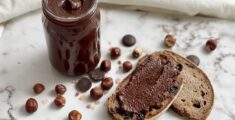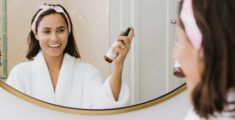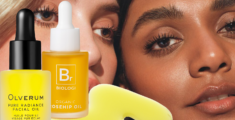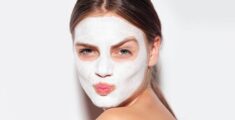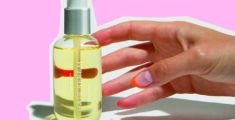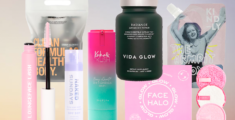Not all skincare ingredients work well together
E.S.K’s Co-Founder Dr Ginni Mansberg explains everything we need to know.
If you’re a beauty enthusiast, you will have seen the layering trend, where 5 or more products and up to an hour is spent on your morning skincare routine plus a massive burden on your credit card. More recently, the backlash to layering has emerged with skin minimalism – almost like a 5:2 for your skin. Neither have any science to back them up.
In fact, there is only good proper scientific evidence for a small number of ingredients, so a 9-step regime is always going to be massive overkill. Not only that, some active ingredients come with a risk of irritation and that can be compounded when some of them are mixed together or when applied to an already irritated skin. But in terms of minimalism, the evidence in skin care is only from daily use, so nobody can promise you that using your skincare every other day will give you any benefits at all.
E.S.K’s Co-Founder Dr Ginni Mansberg explains everything we need to know.
TO LAYER OR TO MIX – WHICH IS OK
Layering makes sense in as much as you need some sort of order to put your skincare on. Here are some general rules;
Cleansing always comes first. This just makes sense. Skin will absorb skin care better when it’s not covered in a layer of grime and dirt. Unless you’ve been troweling on makeup, cleansing just once is plenty. If you have rosacea, only cleanse once a day.
Use morning products in the morning and evening products in the evening. Others can be mixed and matched. For example, Vitamin C works best in the morning because it prevents UV damage. Vitamin A is destroyed by UV rays so should only be applied at night. While Hydroxy acids make you more prone to UV damage so should only be used at night.
Layering techniques unpacked
Option 1. Layering based on consistency;
This process means you layer your skincare from thinnest to thickest. This kind of innately makes sense because the thinner stuff sinks in and leaves no residue. Thinner products can’t penetrate through the barrier of thicker products.
Option 2. Layering based on sunscreen last.
Whatever first then finish with sunscreen in the morning. Sunscreen can be the last step before makeup.
Option 3. Layering based on ancient wisdom.
I have indeed seen blogs claiming some very complicated ancient rituals. For example; One blogger suggested starting your morning routine with an oil-based cleanser followed by a water-based cleanser, then an exfoliator, followed by a toner, then an essence followed by a sheet mask, then an eye serum then a moisturizer then an SPF.
My tip is don’t do that! Apart from requiring a huge amount of money for all of these different products, you would need to wake at 4 am to start the process. Plus, a reminder that an exfoliator is a night product so layering it with an SPF is unhelpful. And nobody needs two different cleansers. Or a toner or for that matter a sheet mask of any description.
How much time between layers?
I have seen 30 minutes bandied around. No need. Thank goodness because here in the real world we don’t have time to spend half your day putting on skincare! As soon as one has been more or less rubbed in, put on the next product!
Layering and skin sensitivity
We sometimes read horror stories where people have essentially burnt their skin thanks to ‘skincare layering’. This certainly might happen because products which should not be mixed together have been.
It’s hard to say whether ‘layering’ or ‘mixing’ is OK or not because it is really about specific ingredients in combination or the pH that might be ideal for one but wrong for another. If your skin is sensitive and you apply lots of products, it will be really hard to know which ingredient or combination caused skin irritation.
So, if you have sensitive skin, or if you are trying to manage a condition of compromised skin barrier (like acne, Rosacea or Eczema), start slow. Start by using only a few products. Ideally, choose skincare ingredients that innately have a high risk of irritation (like AHAs or vitamin C) and SLOWLY add more key actives in. That way if you do get irritation, it will be easier to see what caused it and manage accordingly.
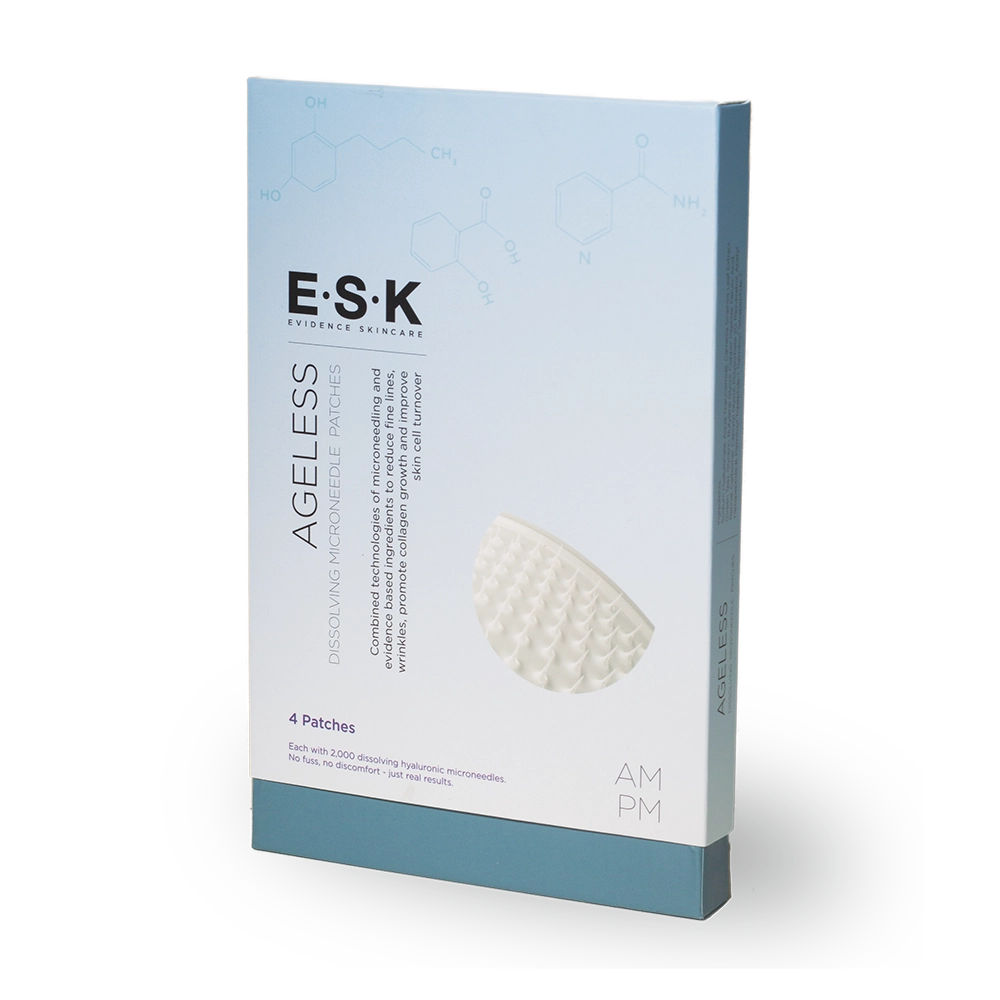
SOME INGREDIENTS DON’T LIKE EACH OTHER
Yes, it’s true that some ingredients don’t ‘like’ each other. Some work better at different pH’s (like Vitamin C and Niacinamide) and combining them can cause irritation in some people with very sensitive skin. I am just fine with it and follow my vitamin c serum in the morning with a product that contains both niacinamide and 4n Butylresorcinol. I have uber sensitive skin but that’s never been an issue for me.
Then there are those infuriating ingredients that are great for most of us but can just be irritating to others (salicylic acid is a great example).
In so many skin care products, there are a number of emulsifiers (ingredients that hold our products together), buffers (ingredients which change the pH of our products), excipients (other ingredients like moisturising, bulking and binding ingredients) and preservatives. All of these can irritate the skin.
The biggest red flags are fragrances, essential oils, Aluminium Hydroxide, Benzalkonium chloride, Sodium lauryl sulphate, Diazolidinyl urea or Methylisothiazolinone. There are so many others but these are classic irritators.
If these are on the ingredient list, you might just need to put the product away
Combos with a side of irritation
Glycolic acid and Retinal: Retinal is brilliant! It has good evidence for reducing the signs of ageing, and assisting with the management of acne, acne scarring, rosacea and hyperpigmentation. And despite being very well tolerated, it is similar in effectiveness to prescription Vitamin A. And pairing it with Glycolic acid can further increase its absorption and effectiveness. But that pairing can increase the risk of irritation from the usually very well-tolerated Retinal. If that happens, drop the Glycolic acid (not the Retinal).
Low pH (important for Vitamin C and AHA-based products) and Vitamin B3: Vitamin B3 or Niacinamide is the ultimate skincare allrounder, assisting in the management of acne, hyperpigmentation, Eczema, ageing skin, improving skin barrier function and skin hydration. It is stable and easy to use in lots of different types of formulations and is well tolerated. But under acidic conditions, it can convert to Niacin which can flush the skin causing redness and sensitivity. The jury is out on how long this takes and how low the pH, temperature and thickness of the product affect this process. But anecdotally we noticed while low pH products can result in sensitivity, adding Vitamin B3-based products immediately after using low pH products (like Vitamin C) can increase the risk of flushing.
If this happens, separate them by 15-20 minutes to allow the vitamin C serum to fully absorb into the skin before putting on your niacinamide product.
Hyaluronic acid: Hyaluronic acid (HA) has been getting a lot of interest and has emerging evidence for a wide range of benefits including increased skin hydration, wound healing and increased skin elasticity. While high molecular weight HA is very moisturising, its molecules are too large to penetrate the skin. Low molecular weight HA can not only penetrate the skin, but it can result in hypersensitivity and also improved absorption of other skincare ingredients. That means that an ingredient which might not ordinarily be able to penetrate (and irritate) the skin, may when combined with an HA product.
If this happens, again separate the products by time. Allow the HA serum to be fully absorbed (say 15 to 20 minutes) before adding your next skincare product.
ALWAYS DO A PATCH TEST FIRST
While there are a few skincare ‘rules’ you can follow, this can only ever be a guide because everyone’s skin is different. Before applying any new combination of skincare products to your face, always perform a patch test. To do this, just apply a small amount of the mixture to a small area of skin and wait 24 hours to see if any irritation occurs. If you experience any redness, itching, or discomfort, investigate further or avoid using that product combination.
Irritated skin reacts to everything
If your skin is irritated, you’ll want to repair your poor skin barrier function so that it can calm down! Top skin barrier repair ingredients include ceramides, niacinamide and panthenol (pro-vitamin B5).
My tip; use a soap-free gentle creamy cleanser to avoid irritating your skin. Only use a good skin barrier-building product like ESK’s Repair Plus. Once your skin has settled down, slowly reintroduce your active skincare ingredients like Vitamins A and C.
For more information visit https://www.eskcare.com/














































